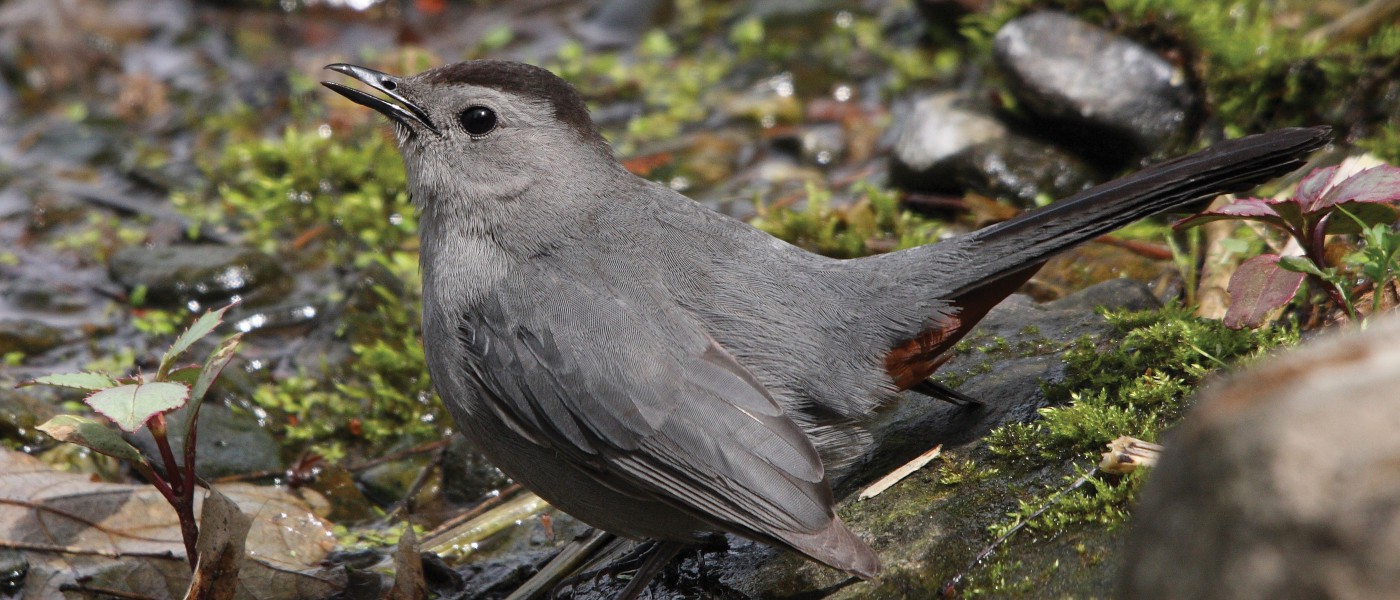Birds of Brooklyn: Gray Catbird
The gray catbird is one of the birds that can be readily seen, heard, and enjoyed as you walk through BBG. Learning to identify it by its call is a good introductory lesson for beginning birders.
Like the northern mockingbird and the brown thrasher, the catbird is part of the Mimidae, a bird family whose members are noted for the ability to copy sounds they hear and incorporate them into their song. Car alarms and sirens are just a few common sounds you might hear these mimics reproduce. The challenge is to distinguish between the songs of the three species. Just remember that the notes sung by catbirds are repeated once, while the thrasher’s are repeated twice and the mockingbird's are repeated three or more times. Another clue is that some of the catbird’s song has a meow-like sound, from which it gets its name.
This slender gray migrant winters in Central America, especially Belize, and is one of the first species to arrive here in spring, usually in early May. Its presence is considered a sign that the rest of the migratory birds are soon to come. As soon as the catbird gets to town, it begins its nesting process. Catbirds build their nests low in dense vegetation, usually in gardens, parks, and at forest edges—they are rarely found in heavily forested areas.
BBG and Prospect Park are ideal places to look and listen for catbirds in Brooklyn. In mid-June, the young are starting to hatch. Unlike many local birds, adult catbirds are able to distinguish between their own eggs and those of the brown-headed cowbird, a “parasitic nester” that lays eggs in other species’ nests, usually to the detriment of the host family’s young. Catbirds toss cowbird eggs right out of their nests, giving their own offspring a better chance of survival.
This ability and the catbird’s adaptability to suburban and urban habitats add up to a thriving population. As June unfolds, baby catbirds will be cared for in the nest for about two weeks before they fledge. The adults will continue parenting the fledglings outside of the nest until it's time for everyone to migrate back to the tropics at the end of the summer. See how many you can identify until then.
The Birds of Brooklyn series looks at some of the most familiar and fascinating birds that call Kings County their habitat.


